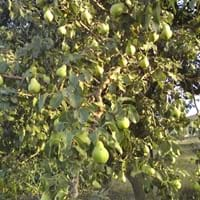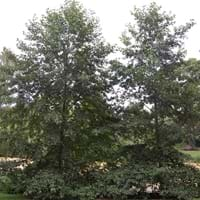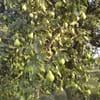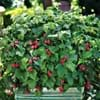Life Span
Perennial
Perennial
Origin
Europe, Western Asia
North America, United States, Northwestern United States, Alaska, California, Canada
Types
common pear
Not available
Number of Varieties
Not Available
Habitat
Humid climates, moist forests
Lowland evergreen rainforest
USDA Hardiness Zone
5-9
4-7
Sunset Zone
2a, 2b, 3a, 3b, 4, 5, 6, 7, 8, 9, 14, 15, 16, 17, 18
3a, 3b, 4, 5, 6, 7, 14, 15, 16, 17
Habit
Oval or Rounded
Pyramidal
Flower Color
White
Yellow, Red, Coral
Flower Color Modifier
Bicolor
Bicolor
Fruit Color
Yellow, Dark Red, Sandy Brown
Brown
Leaf Color in Spring
Green, Dark Green
Green, Dark Green
Leaf Color in Summer
Green, Dark Green
Dark Green
Leaf Color in Fall
Purple, Dark Green, Burgundy
Dark Green
Leaf Color in Winter
Light Green
Not Available
Plant Season
Spring, Summer, Fall
Spring, Summer, Fall
Sunlight
Full Sun
Full Sun, Partial Sun, Partial shade
Type of Soil
Loam
Loam, Sand
The pH of Soil
Neutral
Acidic, Neutral, Alkaline
Soil Drainage
Well drained
Average
Bloom Time
Spring
Early Spring
Tolerances
Drought
Maritime exposure, Salt water
Where to Plant?
Ground
Ground
How to Plant?
Grafting, Seedlings
Layering, Seedlings
Plant Maintenance
Medium
Medium
Watering Requirements
Medium, Water less during winter, Water more in summer, when new, water every week
Average Water Needs
In Summer
Lots of watering
Lots of watering
In Spring
Moderate
Moderate
In Winter
Average Water
Average Water
Soil pH
Neutral
Acidic, Neutral, Alkaline
Soil Type
Loam
Loam, Sand
Soil Drainage Capacity
Well drained
Average
Sun Exposure
Full Sun
Full Sun, Partial Sun, Partial shade
Pruning
Remove damaged leaves, Remove dead branches, Remove dead leaves
Remove damaged leaves, Remove dead branches, Remove dead leaves
Fertilizers
All-Purpose Liquid Fertilizer
All-Purpose Liquid Fertilizer, Nitrogen
Pests and Diseases
Red blotch
Not Available
Plant Tolerance
Drought
Maritime exposure, Salt water
Flowers
Showy
Insignificant
Flower Petal Number
Single
Not Available
Foliage Texture
Medium
Medium
Foliage Sheen
Glossy
Glossy
Attracts
Birds, Butterflies
Insects, Not Available
Allergy
Digestive Problems, Itchiness
Not Available
Aesthetic Uses
Cottage Garden
Not Used For Aesthetic Purpose
Beauty Benefits
Not Available
Skin Problems
Environmental Uses
Air purification
Air purification, Prevent Soil Erosion, Shadow Tree
Medicinal Uses
Astringent, Febrifuge, Sedative
Anodyne, Appetizer, Astringent
Part of Plant Used
Fruits, Wood
Flowers, Inner Bark, Sap
Other Uses
Shelterbelt, Used as a dye, Used as firewood, Used for woodware
Used as a dye, used for making charcoal, Used for making informal hedge
Used As Indoor Plant
No
No
Used As Outdoor Plant
Yes
Yes
Garden Design
Edible, Fruit / Fruit Tree, Topiary / Bonsai / Espalier
Screening / Wind Break, Shade Trees
Botanical Name
PYRUS communis 'Seckel'
ALNUS rubra
Common Name
Dessert Pear, Pear, Seckel Pear
Oregon Alder, Red Alder
In Hindi
Seckel Pear
red alder
In German
Kultur-Birne
rot-Erle
In French
Poirier commun
aulne rouge
In Spanish
peral europeo, peral común
aliso rojo
In Greek
Seckel Pear
κόκκινη σκλήθρα
In Portuguese
Seckel Pear
amieiro vermelho
In Polish
Grusza pospolita
czerwony olcha
In Latin
Seckel Pear
red alnus
Phylum
Tracheobionta
Magnoliophyta
Class
Magnoliopsida
Magnoliopsida
Family
Rosaceae
Betulaceae
Clade
Angiosperms, Eudicots, Rosids
Angiosperms, Eudicots, Rosids
Tribe
Not Available
Not Available
Subfamily
Not Available
Not Available
Number of Species
Not Available
Importance of Seckel Pear and Red Alder
Want to have the most appropriate plant for your garden? You might want to know the importance of Seckel Pear and Red Alder. Basically, these two plants vary in many aspects. Compare Seckel Pear and Red Alder as they differ in many characteristics such as their life, care, benefits, facts, etc. Every gardener must at least have the slightest clue about the plants he wants to plant in his garden. Compare their benefits, which differ in many ways like facts and uses. The medicinal use of Seckel Pear is Astringent, Febrifuge and Sedative whereas of Red Alder is Anodyne, Appetizer and Astringent. Seckel Pear has beauty benefits as follows: Not Available while Red Alder has beauty benefits as follows: Not Available.
Compare Facts of Seckel Pear vs Red Alder
How to choose the best garden plant for your garden depending upon its facts? Here garden plant comparison will help you to solve this query. Compare the facts of Seckel Pear vs Red Alder and know which one to choose. As garden plants have benefits and other uses, allergy is also a major drawback of plants for some people. Allergic reactions of Seckel Pear are Digestive Problems and Itchiness whereas of Red Alder have Not Available respectively. Having a fruit bearing plant in your garden can be a plus point of your garden. Seckel Pear has showy fruits and Red Alder has showy fruits. Also Seckel Pear is not flowering and Red Alder is not flowering . You can compare Seckel Pear and Red Alder facts and facts of other plants too.





